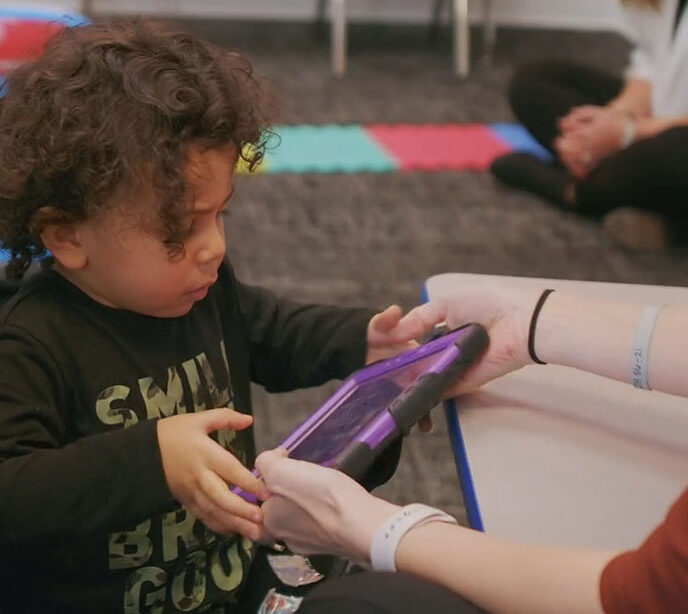Stepping Up to Cover Autism Treatment
When Bobbie and Kyle Robinson’s son Samuel was born in 2012, both had good jobs and good insurance: She is a teacher and he is director of operations for a university basketball program. The future looked bright for the young, growing family, but everything changed the following year when Samuel was diagnosed with autism.
The Robinsons learned their health insurance wouldn’t cover his treatment, which costs about $60,000 a year, leaving them scrambling to find the money. They took out a loan, borrowed heavily from their parents and held a fundraiser. Bobbie Robinson’s father even postponed his retirement to help with their medical bills.
They managed to scrape up the money, but Bobbie Robinson was forced to go on medical leave so she could shuttle Samuel to therapy five days a week — a total of more than 300 miles.
“We’ve paid for health insurance for years, and when we really needed it, we found out that we don’t have it,” said Kyle Robinson, director of basketball operations at East Carolina University in Greenville, North Carolina. “That’s an extra level of stress for families. We found a way this year but eventuallyresources dry up.”
Kyle Robinson’s employer, the state of North Carolina, does not offer employee benefits that cover autism therapy, but a growing number of large private employers such as American Express Co., Capital One Financial Corp., JPMorgan Chase & Co. and United Technologies Corp. are extending their health plans to include comprehensive coverage for autism. With 1 in 68 children receiving a diagnosis of autism spectrum disorder, according to the U.S. Centers for Disease Control and Prevention, the number of autistic children has grown dramatically in the past few decades.
Not surprisingly, more employees are asking for benefits that cover autism treatment, said Lorri Unumb, vice president of state government affairs for Autism Speaks, an advocacy group based in New York.
“There’s been a huge spike in the number of companies offering coverage,” she said. Sheattributes the increase in part to the growing number of states that are passing laws requiring insurers to cover autism treatment. Currently, 37 states have laws in place, according to Autism Speaks. Indiana was the first to pass autism insurance legislation in 2001.
While most insurance plans cover someautism therapies, like speech, physical and occupational therapy, few fully funded plans offered by smaller employers cover appliedbehavioral analysis, or ABA therapy, which is one of the most effective — though costliest — treatments for autism. This is the treatment Samuel Robinson receives.
While state laws don’t apply to self-funded insurance plans, large companies are stepping up voluntarily. Among large self-funded employers, 82 percent offer autism coverage, according to Mercer’s 2013 National Survey of Employer-Sponsored Health Plans.
“Employers have been very receptive,”Unumb said. “In the self-funded world, many companies pride themselves on having excellent benefits to stay competitive.”
In January, JPMorgan Chase began offering autism benefits through its health plan, covering intensive behavior therapy, such as the costly ABA therapy.
Stephen Cutler is JPMorgan Chase’s general counsel and an adviser to Access Ability, the company’s employee resource group for workers with disabilities. In a written statement, he said: “With almost 160,000 employees enrolled in our U.S. medical plan, we are confident that this important new offering will change the lives of many of our employees.”
The Robinsons may get some relief as well if the North Carolina state Senate approves a pending bill requiring insurers to cover the diagnosis and treatment of autism spectrum disorder. The bill would cover screening,diagnosis and a variety of therapies including applied behavioral analysis, which would be covered up to $36,000 a year.
“Obviously, it’s going to pay a significant portion of our son’s therapy,” said Kyle Robinson. “We’d have to sell our house otherwise, and our wedding bands, to get the therapy he needs. We’ve seen so much improvement that we can’t not do it for another year.”
To read the original article, visit the link below.
Together, we can unlock your child’s potential
Related News

10/07/2025
PECS and Its Use in ABA Therapy – Lighthouse Autism Center
The picture exchange communication system, or PECS, is a teaching system that can help an autistic child or another individual with speech difficulties improve their communication skills. We take a look at PECS’ role in ABA therapy and unpack how it works. What Is the PECS System and How Is It Used In ABA Therapy? […]

08/13/2025
ABA Therapy Tips for Taking Your Autistic Child to the Dentist
Taking Your Autistic Child to the Dentist For any child, and even adults, a trip to the dentist can often be filled with anxiety, fear, and discomfort. For a autistic child, especially, these feelings can be even further heightened by sensitivities to noise, smell, and touch. To make this experience better for both the child […]

08/13/2025
Tips for House Hunting with Your Child on the Spectrum
Guidance for Families with Children with Autism when Moving Moving is always a stressful and complicated endeavor. But when you have a child on the autism spectrum, the thought of packing up your household and moving somewhere new can seem like a near-impossible task. Parents often worry that their children will get overwhelmed by this […]


